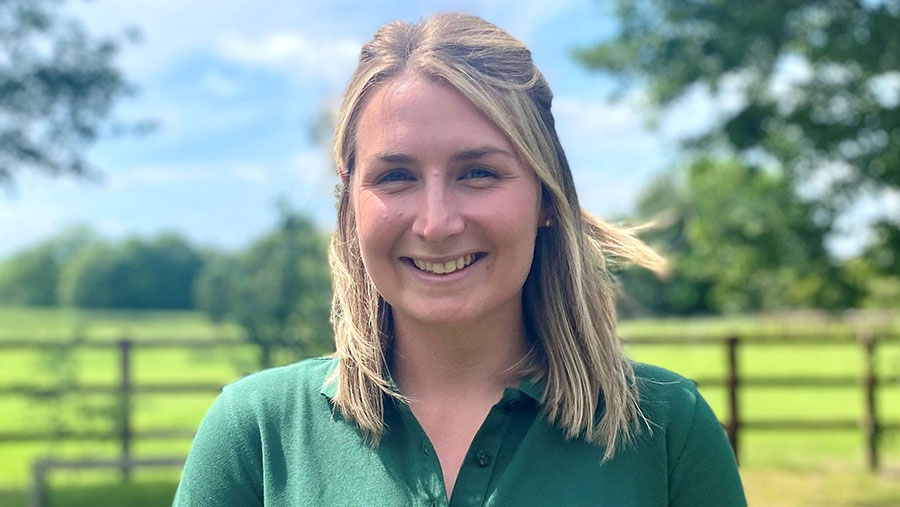Advertiser content
Resilience across the rotation brings multiple benefits
 KWS Extase has an untreated yield of 97% - the highest on the current RL © KWS UK Ltd
KWS Extase has an untreated yield of 97% - the highest on the current RL © KWS UK Ltd Building greater resilience into arable rotations could not only deliver significant improvements in gross margin it could help growers achieve their sustainability targets with multiple benefits across the operation.
Choice of crops grown and picking the varieties most suited to individual farm resources can have a major impact on the resilience of arable production systems, says KWS cereals product manager Dr Kirsty Richards.
“Our breeding focus in recent years has been underpinned by the concept of ‘sowing for peak performance’ or SPP, which puts the emphasis on developing varieties to help growers face the challenges of the future whether these be from climate change, economic pressures or the need for greater sustainability.
“Building greater resilience into rotations also means selecting varieties that can make the most out of individual growing situations and local marketing opportunities.
“A ‘one-size fits all’ approach is increasingly limiting if you are serious about building long-term resilience and sustainability into a farming business.”
“Looking at untreated yield is a good starting point in identifying which varieties might be the best for an individual farm in terms of their resilience, but this needs to be considered in line with regional information too.”
KWS cereals product manager Dr Kirsty Richards

Kirsty Richards © KWS UK Ltd
Did you know…?
Twenty years ago in 2003, just 26% of the varieties on the Recommended List (RL) had untreated yields over 80% of treated controls whereas in 2023 it is now 97%.
Furthermore, 85% of all KWS varieties on the current RL have untreated yields of over 90%, led by KWS Extase at 97% and KWS Dawsum at 95%.
These are exceptional, real-world indications of such varieties’ ability to cope with a range of adverse growing conditions.
Standing power and physical strength essential
Varietal resilience is particularly relevant at the moment with all indications pointing to 2023 being a year with a high incidence of septoria following the very wet spring just experienced, Kirsty Richards explains.
“A variety’s standing power and overall physical strength is another good indication of resilience which again is very important this year, as it could also be one with a high incidence of lodging.
“In 2003, the average lodging resistance with PGR for the top 10 varieties was less than 1% lodged crop whereas in 2023 the top 10 varieties in the ground have an average of over 5% lodging with PGR.
“As well as greater resilience, shorter, stiffer strawed varieties can deliver cash and workload savings resulting from reduced PGR passes, better harvest security and reduced drying costs that often result from lodged crops.”
Financial resilience important too
Financial resilience is also an important factor to bear in mind when planning rotations, with the ability of a variety to hit premium contract specification acting as a vital shock absorber in the current climate of high input costs, she adds.
“Modern Group 1 and 2 varieties such as KWS Zyatt, Extase, Palladium, Ultimatum and Siskin are more consistent in terms of hitting high yields with usable protein levels compared to older varieties.
“Protein content might be a bit lower than some of the older varieties but this is not a problem as millers’ requirements are different.
“A range of specifications is now needed for the greater range of products now demanded by consumers.
“There are very lucrative contracts out there for proteins of over 12% and if you can achieve these whilst achieving 10.5 – 11.5t/ha yields, these can deliver really high returns.”
Financial benefits of diverse cropping

Olivia Potter © KWS UK Ltd
“A well-structured rotation can also ensure water is used more effectively, secure higher yields, increase biodiversity and reduce greenhouse gas production.”
Olivia Potter, technical specialist at KWS
According to Olivia Potter, technical specialist at KWS, a financial analysis carried out by the company shows that with more diverse cropping, including cover crops and sugar beet, the benefits can be worth over £2,000/ha across a six-year rotation.
“Working with costings from the John Nix farm management handbook suggests a restricted six-year rotation based on just two wheats followed by OSR, and this then being repeated, would produce a net gross margin of £6,628/ha.
“Introducing a more diversified rotation adding winter barley, sugar beet and spring barley interspersed with catch and cover crops where appropriate would lift this to £8,726/ha over the same six-year rotation.
“This is an improvement of £2,098/ha or over 30% in real terms. Plus, of course, that’s before you factor in all the additional benefits such as better soil structure, reduced use of key inputs and less incidence of diseases.”
Provided by
KWS is one of the world's leading plant breeding companies combining 165 years of heritage with leading edge technology and a commitment to develop and deliver varieties with the best yields, disease resistance, physical traits and resistance to abiotic stress.
